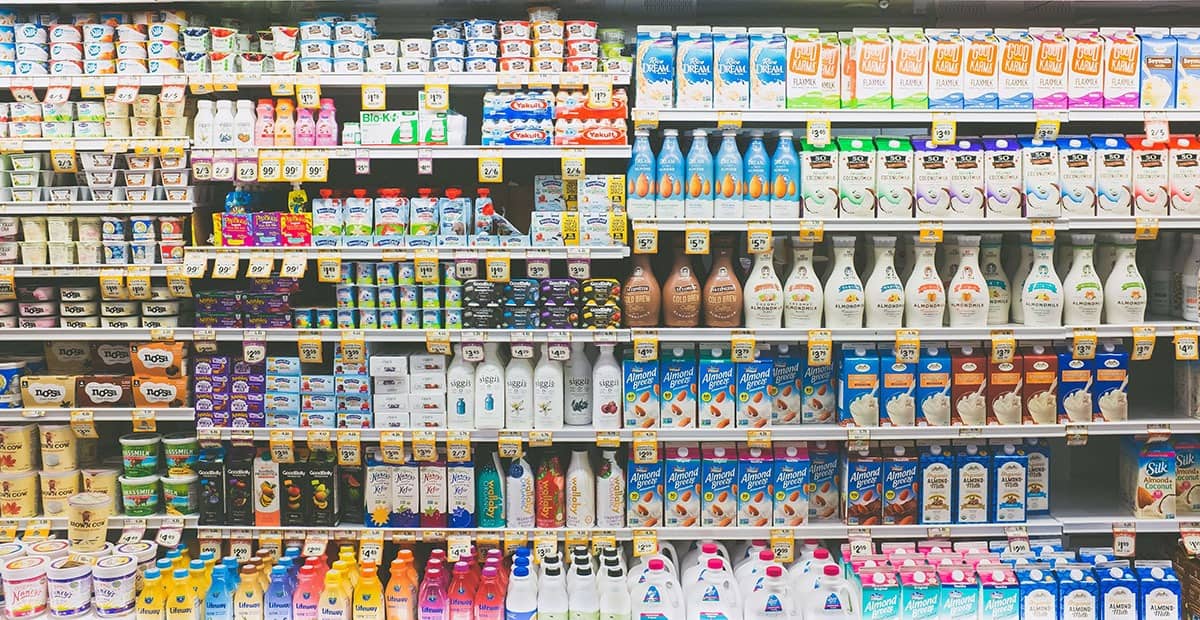April 1, 2019 by Olivia Roehm | Account Executive
Is there a real danger of the retail store dying off due to advancements in technology, and e-commerce behemoths like Amazon and Alibaba? Studies show that the “brick and mortar” retail store isn’t going anywhere, and in some cases is even making a comeback.
The best practice, for all businesses with an in-store and online presence, is to find ways to leverage both markets and capitalize on marketing efforts that drive optimal results. Let’s take a look at some strategies for driving in-store business from our online presence.
Lead Generation
Gathering an email database can give small businesses a great opportunity to develop unique personal outreach to customers in competitive markets. Think of the few emails that you look forward to in your inbox – for me, it’s the The Skimm, a woman-focused subscription-only newsletter meant to share top headlines in a creative way. Here’s another list of top-rated email campaigns. Email can be used to tactically drive traffic to your product in-store -simply embrace the authenticity of your brand!
Here are 3 easy methods you can start today to generate more leads.
- Social Media Ads/Display Ads – offer a FREE download of something valuable to your customer – a recipe book, coupon, webinar, e-book, or enter them into a sweepstakes contest. Request information you want in exchange for your offer.
- Landing Pages – When customers are leaving other platforms (Email, social media, etc.) and being redirected back to your website, make sure you have a landing page set up. If they clicked through a very specific message, this landing page is going to extend that experience. This should include a very specific call to action, directed towards an experience they can have in-store. Make sure to track every part of the process with tools that track data. Check out some of our Google Solutions Dashboards that can help you review your tracking methods.
- Pop-Up Discounts – when a potential customer visits your website, install a quick pop-up ad, which asks for their email in exchange for something of value (ideas above) to them.
Now, you have emails – what do you do with them? Start building that unique email sales funnel driving interaction with your products online or on the shelf.
Pro Tip: Your email lists can be used for building so much more than just email campaigns. If you segment your email list based on people who interact with particular content, you can build advertising audiences based on what you already know about your email list subscribers!
Become SEARCHABLE!
96% of online shoppers search for local businesses and physical stores online! In 2019, people are still Googling on Search where they can buy a certain product in a physical store. It is important to have a website that is SEO-friendly (Search Engine Optimization) and can be found by online shoppers who are looking for a product like yours. It sounds counterintuitive in the online shopping age, but it can be very frustrating when consumers can’t find an actual store to buy or get the service they need. And this need is only growing as consumers become more interested in adding specialty products to their regular purchase cycle. If you can show them that your product is within 5 miles, they will likely take the opportunity to purchase.
Becoming SEO-friendly involves a number of things – SEO delivers the best results when done consistently over time. The most important item is to make sure all your contact and location information across all pages (social media, website, Google My Business, etc.) is accurate. Google allows businesses to set up and optimize their Google Places listings. Make sure you do that here and check out these guidelines on optimizing Google places to drive more traffic. Secondly, make sure your product locator on your site is working well and has accurate information. Find out more about everything involved in SEO here.
Pro Tip: Add or claim your business on Google. As of 2016 56% of local retailers had not claimed their business on Google.
Use your Website and Advertising to Push Customers In-Store
Remember, 96% of online shoppers search for local businesses online, and one study shows that 85% of consumers still prefer to shop in a physical store. This leaves a great opportunity to apply these tips:
- Advertise new arrivals and product launches available only in-store.
- Create downloadable (to a phone) coupons that can only be used in-store.
- Create launch events, have relevant guests/influencers in-store, and in-store end of season sales.
- Offer free pick-up in-store from online orders.
- Boost your brand image through high-quality photos. Using your online presence is a great way to show people what you are all about. A hip, fun, and inviting store photo can entice buyers to want to visit the physical location.
In-Store Analytics
It is vital to the overall business strategy to understand which marketing efforts lead to which returns on investment. You may be thinking that once the online traffic drives the customer in-store, the data trail is lost. There are a number of ways to use data and analytics in-store to follow where customers came from.
- Train employees to ask customers what brought them into the store, or ask if they saw a certain ad. This data can be manually tracked.
- If the customer is using an online coupon/promo from a marketing campaign, keep track of where that unique coupon came from and add to a conversions report.
- Leverage the Facebook Offline Event Tracking. This tool allows you to upload manual data collected at events to Facebook, and track which people who attended saw your ads, engaged with your ads, and are likely to have been visited and converted because of the ad.
There are a number of benefits to having an in-store presence and an online presence. Businesses should direct their focus away from trying to pick one or the other when creating a marketing strategy in this day and age. These two should always complement each other and be used as a way to grow and scale the business to new heights.



